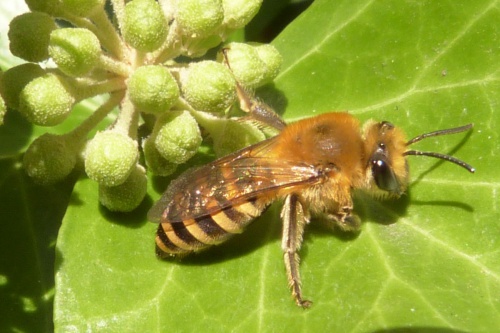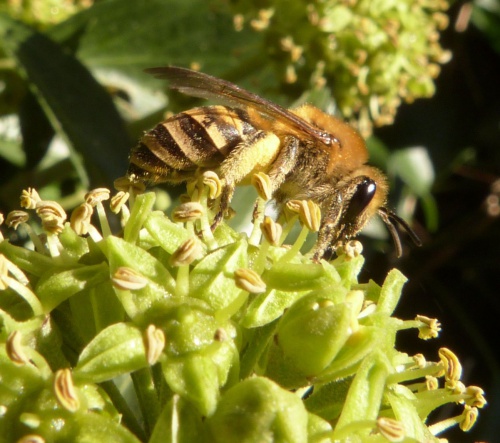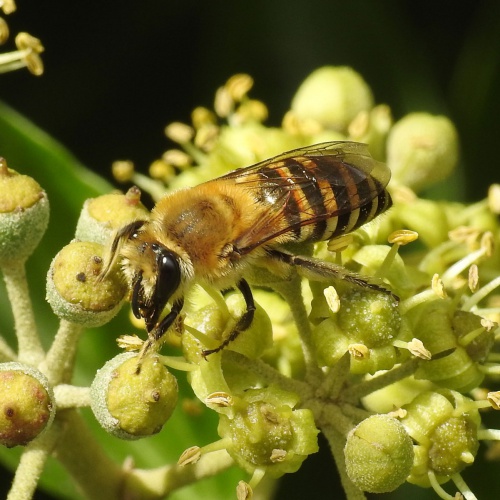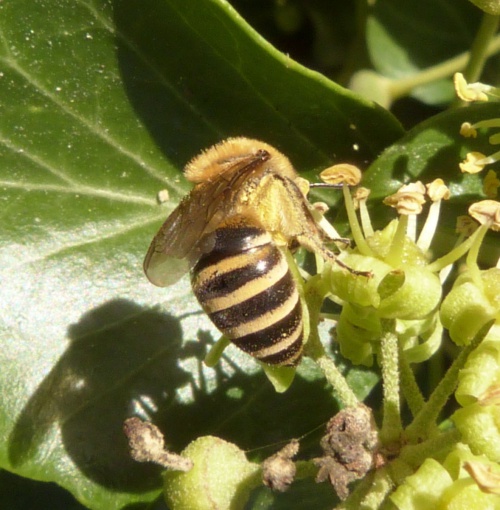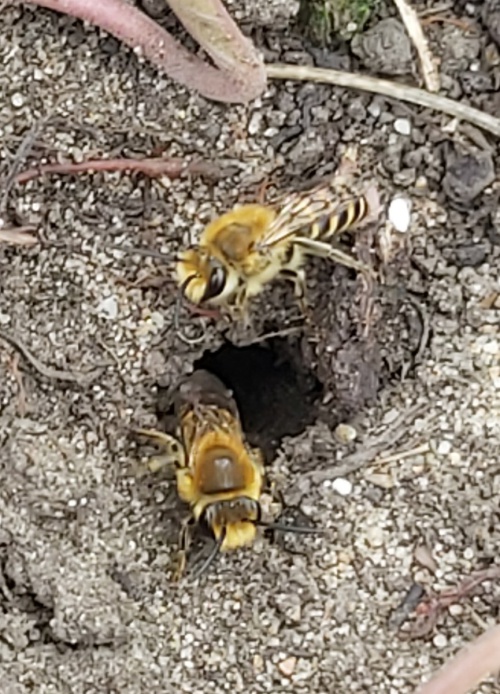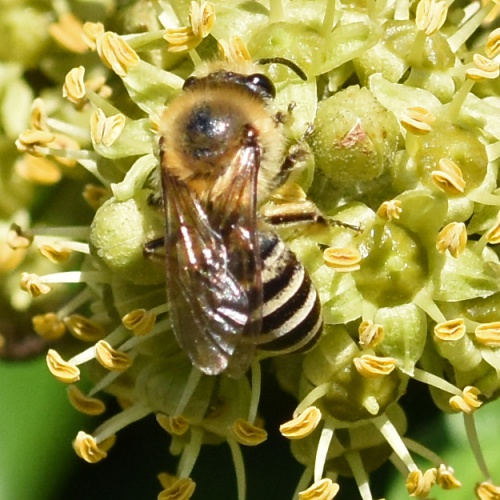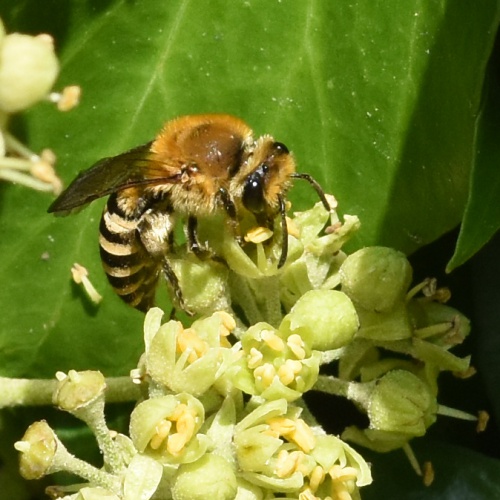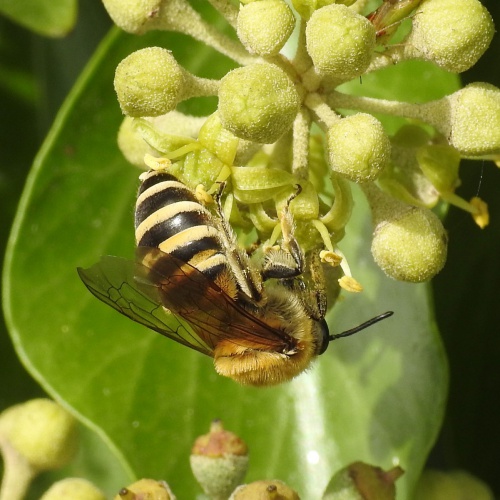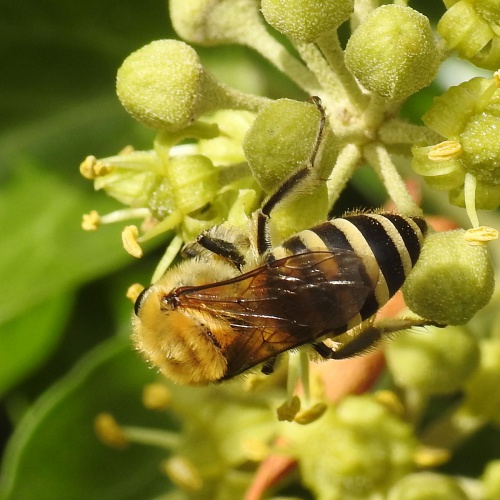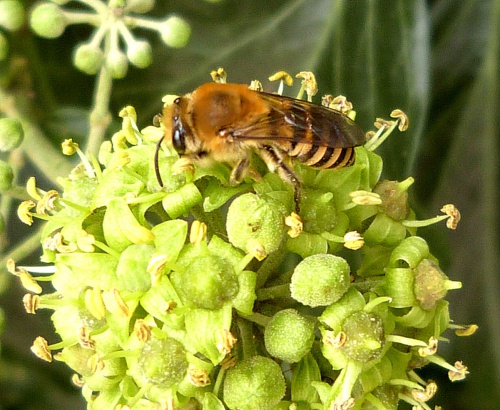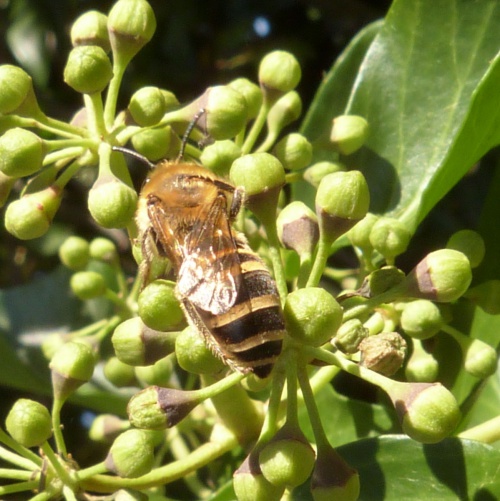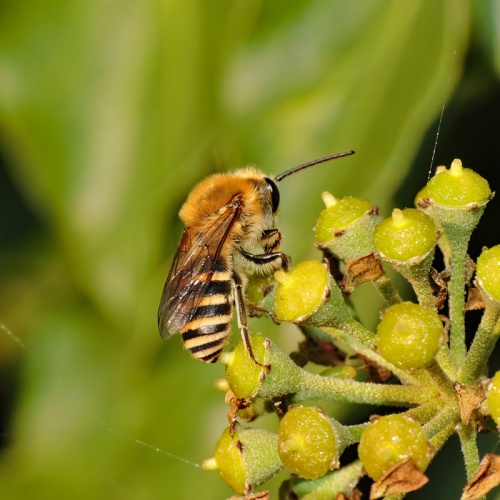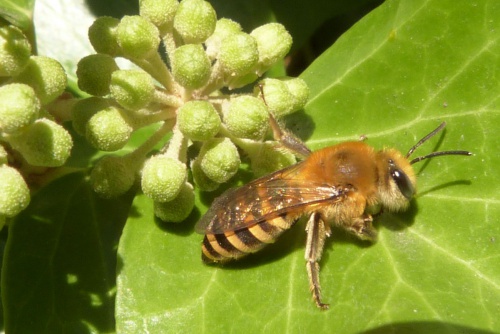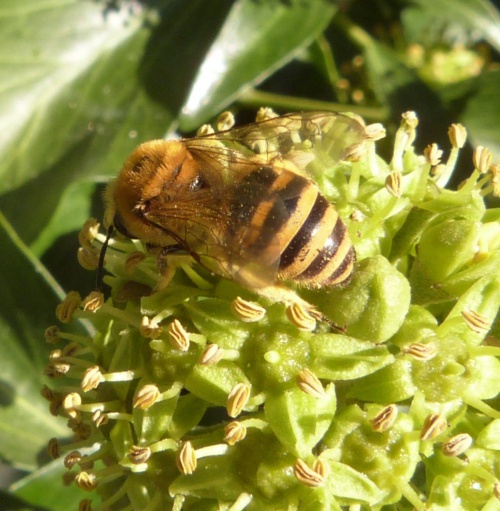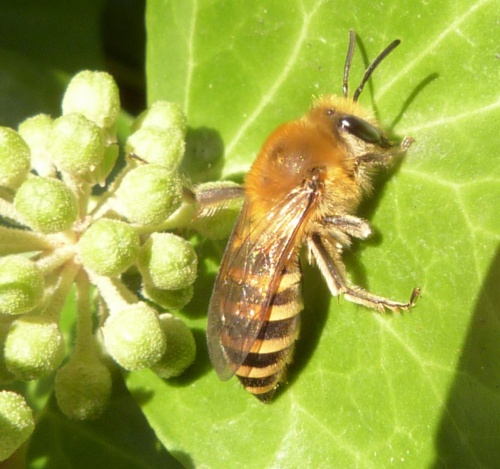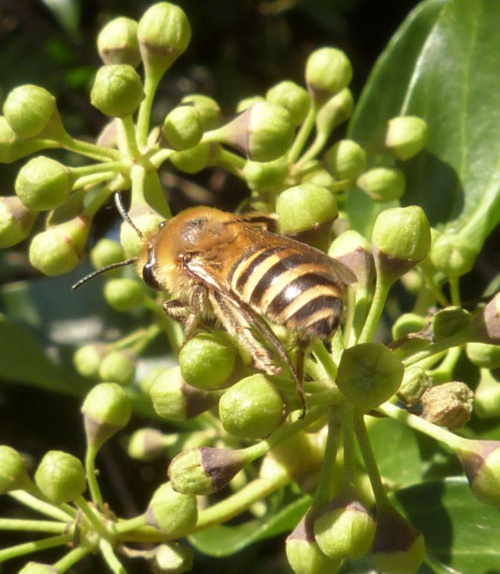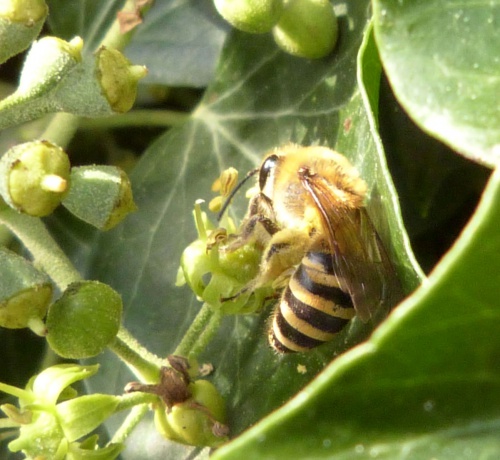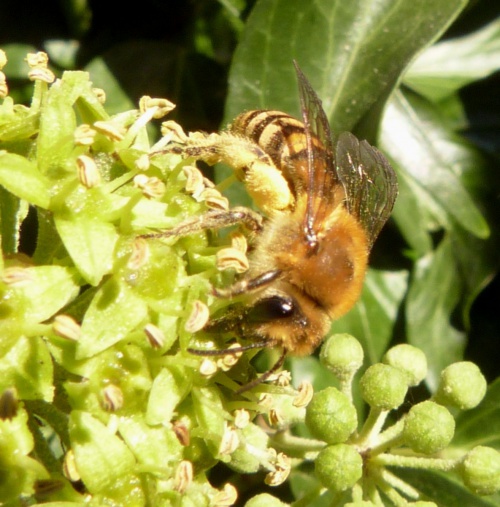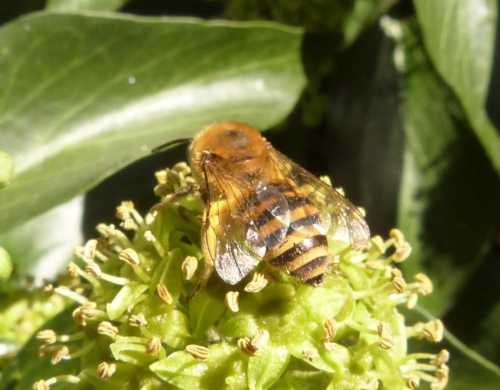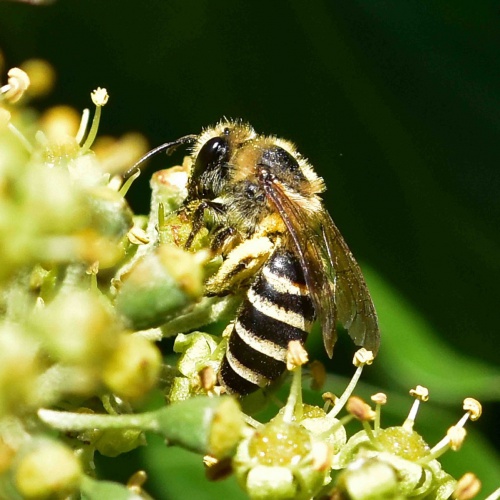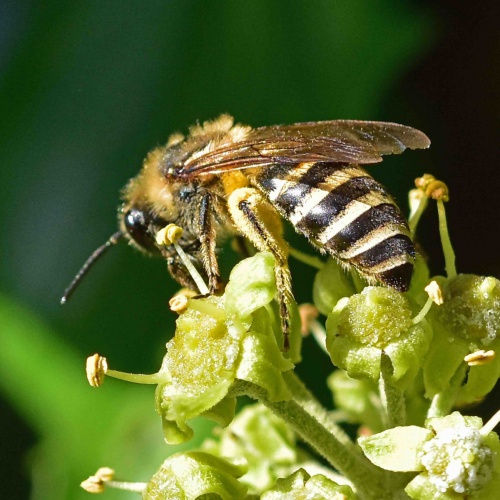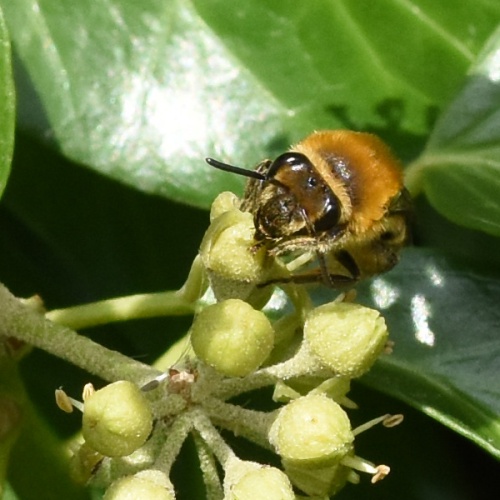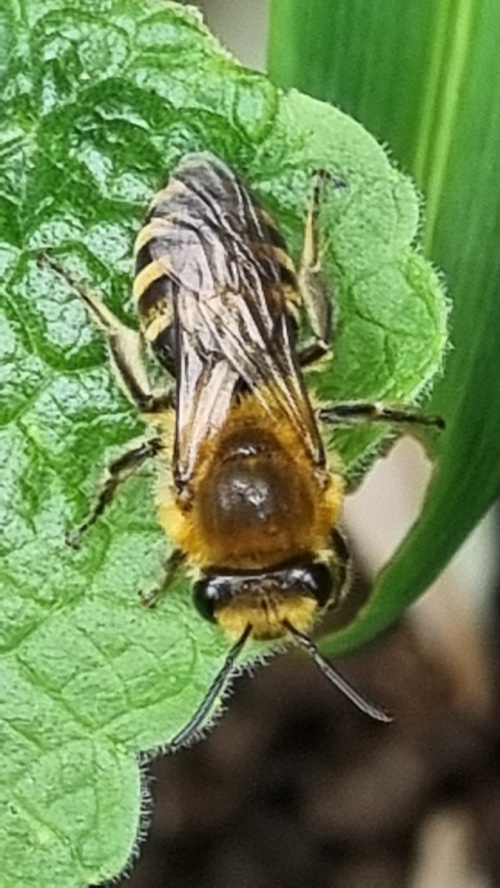Ivy Bee - Colletes hederae
The largest of the UK banded Colletes species. The forewing of the female measures 9.5-10mm, the male 8-8.5mm. The broad buff-coloured bands and orange thorax of a freshly emerged female are unmistakable, though care needs to be taken with males or faded specimens.
The Ivy Bee nests in loose soil, favouring sparsely vegetated south-facing banks. Nesting aggregations can be huge in suitable locations with thousands of nests. Pollen is collected almost exclusively from Ivy which must be available near to the nest sites.
This species has a single flight period from early September to the start of November. The males emerge first.
This species was only described as new to science in 1993 and first recorded in the UK in 2001. It is now widespread along most of the south coast, south Wales and East Anglia, and extending its range steadily northwards.
The species was first found in VC55 on 03 Oct 2017 at Pinfold Lane allotments, North Luffenham (SK934034). It was found at a further 11 sites in 2018.
Leicestershire & Rutland Map
Enter a town or village to see local records
MAP KEY:
Yellow squares = NBN records (all known data)
Coloured circles = NatureSpot records: 2020+ | 2015-2019 | pre-2015
UK Map
Species profile
- Common names
- Ivy Bee
- Species group:
- Bees, Wasps, Ants
- Kingdom:
- Animalia
- Order:
- Hymenoptera
- Family:
- Colletidae
- Records on NatureSpot:
- 145
- First record:
- 15/09/2018 (Gould, David)
- Last record:
- 05/11/2023 (Pugh, Dylan)
Total records by month
% of records within its species group
10km squares with records
The latest images and records displayed below include those awaiting verification checks so we cannot guarantee that every identification is correct. Once accepted, the record displays a green tick.
In the Latest Records section, click on the header to sort A-Z, and again to sort Z-A. Use the header boxes to filter the list.


